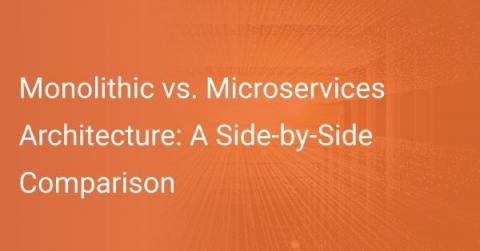Systems | Development | Analytics | API | Testing
Microservices
Monolithic vs. Microservices Architecture: A Side-by-Side Comparison
Microservices have gained a lot of traction in the last few years. Ever since the dawn of time, monolithism – packaging all your modules into one colossal codebase – was the default way to go when building software applications. However, as applications have had to cater to increasing volumes (of millions) of users over the internet over the last decade, scalability and flexibility have become ever more critical.
Top 10 Microservices Benefits
5 Best Practices for Successful Microservices Implementation
How Kubernetes Is Modernizing the Microservices Architecture
In this three-part blog series, we examine the critical role Kubernetes plays in shaping the future of infrastructure, including the rise of containers and Kubernetes. The first in the series covers Next-Generation Application Development. The second covers the Next Frontier: Container Orchestration. And the third covers How Kubernetes Gets Work Done.
A Beginner's Guide to Microservices
Token-Based Access Control With Kong, OPA and Curity
As APIs and microservices evolve, the architecture used to secure these resources must also mature. Utilizing a token-based architecture to protect APIs is a robust, secure and scalable approach, and it is also much safer than API keys or basic authentication. However, token-based architecture comes in varying maturity levels, as outlined by the API Security Maturity Model.
Microservices Trends: The Top 4 Trends That Will Shape Microservices Development In 2022
Microservices Monitoring and Logging with Kong Konnect
2 Approaches to Microservices Monitoring and Logging
We’re seeing a massive shift in how companies build their software. More and more, companies are building—or are rapidly transitioning—their applications to a microservice architecture. The monolithic application is giving way to the rise of microservices. With an application segmented into dozens (or hundreds!) of microservices, monitoring and consolidated logging become imperative.








